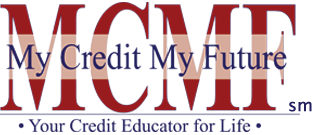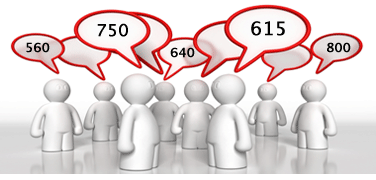

- Credit 101
- Teaching Tools
- Scores
- Life Stages
- Credit Mishaps
- Understanding Different Bankruptcy Chapters
- Your Credit Report After a Bankruptcy
- Understanding Judgments
- Inaccuracies on Your Credit Report
- Disputing Credit Report Errors
- Understanding Foreclosure
- The Foreclosure Process & What To Do Afterwards
- Understanding Identity Theft
- In the event of: The Death of a Spouse
- Rebuilding Your Credit
- Choosing a Reputable Credit Counselor
- Avoid the Downside of Credit Mismanagement
- What is a Credit Freeze
- Worksheets & Letters
- 6 Steps to Creating a Budget
- Household Budget: Wants vs Needs
- Personal Budget Template
- Understanding Amortization Schedules
- Loan Amortization Calculator
- Sample Opt-Out Letter
- Sample Dispute Letter
- Annual Credit Report Request Form
- Auto Loan Payment Calculator
- Back-to-School Budgeting
- Cost of Credit
- Emergency Fund
- How Much Car Can You Afford
- How Much House Can You Afford
- How Much Will College Cost
- How Much Will My Loan Cost
- How Will My Savings Grow
- Mortgage Payment
- Mortgage Refinancing
- Pay Down Debt or Invest
- Repaying Student Loans
- Retirement Fund
- Rework Your Budget
- Saving for a Goal
- Should I Consolidate My Debt
- Travel Budgeting
- Your Holiday Budget
- Buying a House
- 5 Steps to Buying a Home
- 5 C's of credit When Applying for a Loan
- What Score is Needed to Purchase a Home
- Using a Realtor
- Understanding Fixed Rate Mortgages
- Understanding FHA Loans
- Understanding VA Loans
- Understanding Interest Only Loans
- Understanding ARM Loans
- Understanding Combo Loans
- Understanding Streamline K Loans
- Understanding Bridge Loans
- Understanding HELOC (Home Equity Line of Credit)
- Understanding Reverse Mortgages
- Basic Mortgage Underwriting Principles
- Credit & Financial Law
- Home

Understanding Different Bankruptcy Chapters
Your Credit Report After a Bankruptcy
Inaccuracies on Your Credit Report
Disputing Credit Report Errors
The Foreclosure Process and What To Do Afterwards
In the event of: The Death of a Spouse

Understanding Different Bankruptcy Chapters
There are four kinds of bankruptcy proceedings. They are referred to by the chapter of the federal Bankruptcy Code that describes them.
Chapter 7 is the most common form of bankruptcy. It is a liquidation proceeding in which the debtor's non-exempt assets, if any, are sold by the Chapter 7 trustee and the proceeds distributed to creditors according to the priorities among creditors established in the Code.
Chapter 7 is available to individuals, married couples, corporations and partnerships. Individual debtors get a discharge within 4-6 months of filing the case.
If there are assets which are not exempt, the trustee takes control of those assets, sells them and pays creditors as much as the proceeds permit.
Any wages the debtor earns after the case is begun are the debtor's, the creditors have no claim on those earnings.
Chapter 11 is a reorganization proceeding, typically for corporations or partnerships. Individuals, especially those whose debts exceed the limits of Chapter 13, may file Chapter 11.
In Chapter 11, the debtor usually remains in possession of his assets and continues to operate any business, subject to the oversight of the court and the creditors committee.
The debtor proposes a plan of reorganization which, upon acceptance by a majority of the creditors, is confirmed by the court and binds both the debtor and the creditors to its terms of repayment. Plans can call for repayment out of future profits, sales of some or all of the assets, or a merger or recapitalization.
Chapter 12 is a simplified reorganization for family farmers, modeled after Chapter 13, where the debtor retains his property and pays creditors out of future income.
Chapter 13 is a repayment plan for individuals with regular income and unsecured debt less than $336,900 and secured debt less than $1,010,650.
The debtor keeps his property and makes regular payments to the Chapter 13 trustee out of future income to pay creditors over time (3-5 years).
Repayment in Chapter 13 can range from 10% to 100% depending on the debtor's income and the make up of the debt.
Certain debts that cannot be discharged in Chapter 7 can be discharged in Chapter 13. Chapter 13 also provides a mechanism for individuals to prevent foreclosures and repossessions, while catching up on their secured debts.
